Queen Elizabeth II 1926-2022
 Queen Elizabeth II, the United Kingdom's longest serving monarch, died at Barmoral aged 96, after reigning for 70 years. The Queen died peacefully on Thursday 8th September at her Scottish estate, where she had spent much of the summer. The Queen came to the throne in 1952 and witnessed enormous social change. Her son, King Charles III, said the death of his beloved mother was a moment of great sadness for him and his family and that her loss would be deeply felt around the world. He said, "We mourn profoundly the passing of a cherished sovereign and a much-loved mother. I know her loss will be deeply felt throughout the country and the Commonwealth, and by countless people around the world". Prime Minister Liz Truss said "The monarch was a rock on which modern Britain was built".
Queen Elizabeth II, the United Kingdom's longest serving monarch, died at Barmoral aged 96, after reigning for 70 years. The Queen died peacefully on Thursday 8th September at her Scottish estate, where she had spent much of the summer. The Queen came to the throne in 1952 and witnessed enormous social change. Her son, King Charles III, said the death of his beloved mother was a moment of great sadness for him and his family and that her loss would be deeply felt around the world. He said, "We mourn profoundly the passing of a cherished sovereign and a much-loved mother. I know her loss will be deeply felt throughout the country and the Commonwealth, and by countless people around the world". Prime Minister Liz Truss said "The monarch was a rock on which modern Britain was built".
Charles III was formally proclaimed the King of the United Kingdom and fourteen other Commonwealth realms at a historic ceremony at St James's Palace in London on Saturday 10th September 2022. Six former Prime Ministers of the UK attended the ceremony, as King Charles III became the oldest monarch in British history to ascend to the throne. This was the first time that the Accession Council was televised. In his emotional address to the public, the new King promised to serve the nation with the same unswerving devotion as the late Queen had during her 70-year reign. It may be several months before the new King is crowned. King Charles III is a staunch Philhellene and has recently visited Greece several times, as in 2021 when he represented the U.K. for the bicentennial celebrations of the start of the Greek War of Independence in March 1821. Charles III father was Prince Philip, born on the island of Corfu, and his grandfather was Prince Andrew of Greece, a younger son of King George I of the Hellenes.
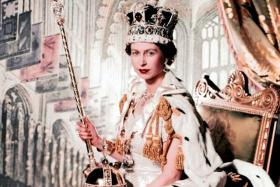


Sunday 11th September, Queen Elizabeth II's oak (lead-lined) coffin, which was kept in the ballroom at Balmoral Castle, was transported by her gamekeepers to a waiting hearse. Her body proceeded slowly on the six-hour journey to Edinburgh to arrive at the Palace of Holyroodhouse, the official residence of the British monarch in the Scottish capital, to lie in the Throne Room. On Monday afternoon, the Queens coffin travelled by procession to St Giles' Cathedral, accompanied by the new King and members of the Royal Family. The Queen's coffin was draped with the Scottish Royal Standard with the Crown of Scotland placed on top. That evening, King Charles III held a vigil with members of the Royal Family at St Giles' Cathedral.
Tuesday 13th September, the Queens coffin was taken from St Giles' Cathedral to Edinburgh airport, for her final flight from Scotland to RAF Northolt, North West London, from where it travelled by road to Buckingham Palace to rest in the Bow Room.
Wednesday 14th September, the Queen's body travelled in a public procession from Buckingham Palace to Westminster Hall on a gun-carriage of the King's Troop Royal Horse Artillery accompanied by a military parade and members of the Royal Family. In Westminster Hall, the coffin rested on a raised platform, draped with the Royal Standard and topped with the Imperial State Crown, orb and sceptre. Each corner of the platform was guarded by soldiers from military units that serve the Royal Household.
Thursday 15th September marked the first of four full days that the Queen's body lay-in-state in Westminster Hall, where she remained until the morning of the state funeral. The Queen's coffin was placed upon a raised 'catafalque' platform so that the public, who had queued along the South Bank of the River Thames, were able to file past the Queen and pay their final respects.
Monday 19th September, the Queen's lying-in-state endend that morning, and her coffin was taken in procession to Westminster Abbey for the state funeral, which was declared a Bank Holiday in the United Kingdom. After the state funeral, the coffin travelled in procession from Westminster Abbey to Wellington Arch, from where it travelled to Windsor, taken along the Long Walk to Saint George's Chapel in Windsor Chapel, where the committal service took place and the coffin was lowered into the vault. There was a final family service held in private later that evening. The Queen was then buried alongside her father King George VI, the Queen Mother and her sister Margaret. Her late husband, Prince Philip, Duke of Edinburgh, had his coffin moved to join her, after his death and burial in April 2021. Queen Elizabeth II is the eleventh former monarch to be buried in the chapel of Windsor Castle.
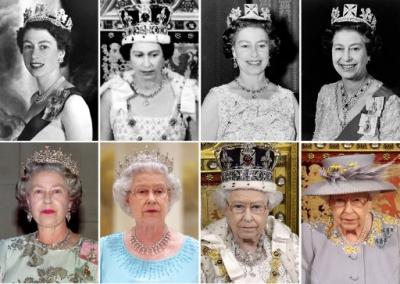 Princess Elizabeth (born Elizabeth Alexandra Mary on 21st April 1926) became Her Royal Majesty Queen Elizabeth II in 1952 at the age of 25. Her father, King George VI died on 6th February 1952 at the age of 56. Upon his death, Princess Elizabeth, his oldest daughter became Queen of the United Kingdom. Princess Elizabeth and her husband, Prince Philip, were in East Africa when King George VI died. With news of the King's death, the couple immediately made plans to return home. When the new Queen arrived back in London, she was met by Prime Minister Winston Churchill to begin preparations for viewing and burial of her father. Queen Elizabeth II's coronation was held at Westminster Abbey on 2nd June 1953. It was the first televised coronation in history. Before the coronation, Elizabeth II and Philip, Duke of Edinburgh, moved into Buckingham Palace in preparation for her reign. Queen Elizabeth II reigned as Queen of the United Kingdom, until just months after her Platinum Jubilee celebrated her 70 years on the throne.
Princess Elizabeth (born Elizabeth Alexandra Mary on 21st April 1926) became Her Royal Majesty Queen Elizabeth II in 1952 at the age of 25. Her father, King George VI died on 6th February 1952 at the age of 56. Upon his death, Princess Elizabeth, his oldest daughter became Queen of the United Kingdom. Princess Elizabeth and her husband, Prince Philip, were in East Africa when King George VI died. With news of the King's death, the couple immediately made plans to return home. When the new Queen arrived back in London, she was met by Prime Minister Winston Churchill to begin preparations for viewing and burial of her father. Queen Elizabeth II's coronation was held at Westminster Abbey on 2nd June 1953. It was the first televised coronation in history. Before the coronation, Elizabeth II and Philip, Duke of Edinburgh, moved into Buckingham Palace in preparation for her reign. Queen Elizabeth II reigned as Queen of the United Kingdom, until just months after her Platinum Jubilee celebrated her 70 years on the throne.
"My whole life, whether it be long or short, shall be devoted to your service". The long reign of Queen Elizabeth II was marked with her strong sence of duty and her determination to dedicate her life to her throne and to her people. She became for many the one constant point in a rapidly changing world as British influence declined, society changed beyond recognition and the role of the monarchy itself came into question. Her success in maintaining the monarchy through such turbulent times was quite remarkable.
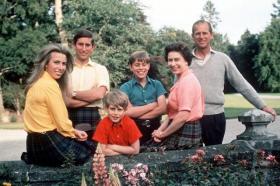
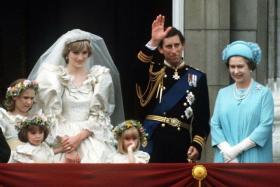

In 1939, the 13-year-old princess, together with her sister Margaret, visited the Royal Naval College at Dartmouth where she was escorted by one of the cadets, her third cousin, Prince Philip of Greece. It was not the first time they had met, but it was the first time she took an interest in him, by the time she was 18, Elizabeth was clearly in love with him. On 20th November 1947, the couple were married in Westminster Abbey. They were together until the death of her beloved husband Prince Philip, HRH the Duke of Edinburgh, on 9th April 2021 in the midst of the global Coronavirus pandemic that separated people in so many ways.
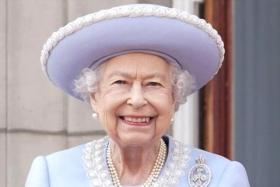

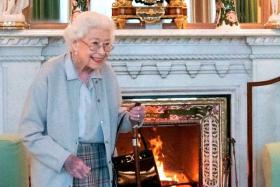
On 9th September 2015, Elizabeth II had become the longest serving reigning monarch in British history, surpassing the reign of her great-great-grandmother Queen Victoria. Following the death of Prince Philip, the Queen withdrew from much of public life, though she appeared on the balcony of Buckingham Palace for her Platinum Jubilee celebrations, culminating in a four day UK bank holiday weekend from 2nd-5th June 2022. The Queen then retired to Balmoral for the summer, her favourite royal residence.
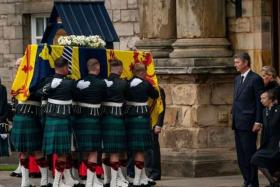
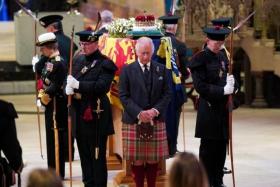
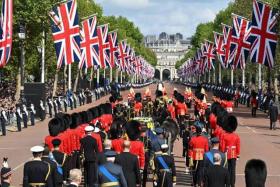

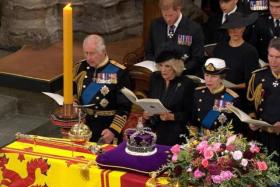

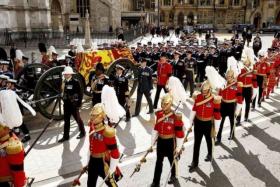
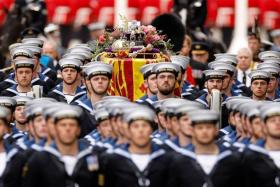
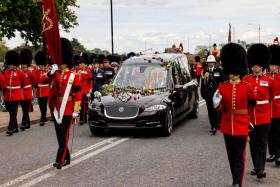

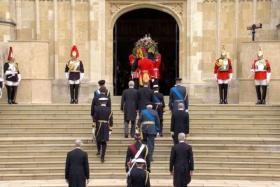

For the majority of British people, Queen Elizabeth II was the only monarch they had ever known, and with Charles III and his son and heir William, Prince of Wales, it will be very unlikely that they will ever see another Queen as head of state in their own lifetime.